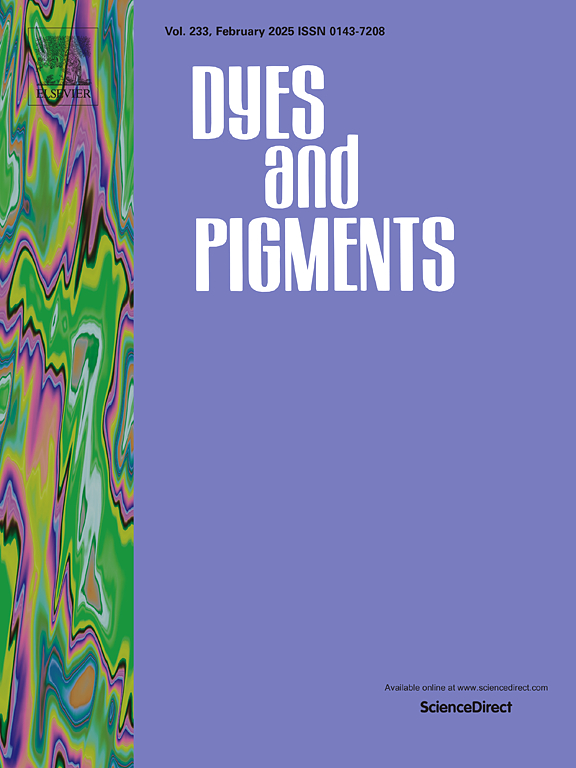In vitro evaluation of color stability of three maxillofacial silicone elastomers: Effects of soap-based disinfection
IF 4.1
3区 工程技术
Q2 CHEMISTRY, APPLIED
引用次数: 0
Abstract
The preservation of color stability in maxillofacial silicone prostheses is essential for their aesthetic appeal and functional durability. This research investigated the impact of two soap-based disinfectants and tap water on the color stability of three silicone elastomers: A-2186-F, VST-50, and GC Silfy, over a simulated five-year clinical service duration. The samples were immersed daily for two weeks in tap water, Muse hand disinfectant soap, and Hadakara body soap, simulating approximately five years of clinical use. Color stability was evaluated at baseline (T0), after 7 days (T1), and after 14 days (T2). The results revealed that the disinfectants exerted minimal influence on the color stability of the silicones, with GC Silfy and VST-50 exhibiting greater resistance to discoloration than A-2186-F. Particularly, exposure to Muse hand disinfectant soap led to the most significant color alteration in A-2186-F. Nevertheless, the changes observed across all materials remained below the threshold of perceptibility (ΔE∗ = 1.1), indicating that they are not visually noticeable. These findings underscore the significance of selecting appropriate materials and ensuring disinfectant compatibility to preserve the aesthetic quality of maxillofacial prostheses. By refining cleaning protocols, it may be feasible to improve the longevity and clinical efficacy of these prosthetic materials.

体外评估三种颌面部硅树脂弹性体的颜色稳定性:皂基消毒的影响
在颌面硅胶假体的颜色稳定性的保存是必不可少的审美吸引力和功能耐久性。本研究研究了两种肥皂基消毒剂和自来水对三种硅弹性体(a -2186- f、VST-50和GC Silfy)颜色稳定性的影响,模拟了五年的临床服务时间。这些样本每天浸泡在自来水、Muse手部消毒皂和Hadakara身体皂中两周,模拟大约五年的临床使用。在基线(T0)、7天后(T1)和14天后(T2)评估颜色稳定性。结果表明,消毒剂对有机硅的颜色稳定性影响较小,GC Silfy和VST-50的抗变色性优于A-2186-F。特别是,接触Muse洗手皂导致A-2186-F的颜色变化最为显著。然而,在所有材料上观察到的变化仍然低于可感知的阈值(ΔE∗= 1.1),表明它们在视觉上不明显。这些发现强调了选择合适的材料和确保消毒剂的相容性对保持颌面修复体的美学质量的重要性。通过改进清洁方案,可以提高这些假体材料的使用寿命和临床疗效。
本文章由计算机程序翻译,如有差异,请以英文原文为准。
求助全文
约1分钟内获得全文
求助全文
来源期刊

Dyes and Pigments
工程技术-材料科学:纺织
CiteScore
8.20
自引率
13.30%
发文量
933
审稿时长
33 days
期刊介绍:
Dyes and Pigments covers the scientific and technical aspects of the chemistry and physics of dyes, pigments and their intermediates. Emphasis is placed on the properties of the colouring matters themselves rather than on their applications or the system in which they may be applied.
Thus the journal accepts research and review papers on the synthesis of dyes, pigments and intermediates, their physical or chemical properties, e.g. spectroscopic, surface, solution or solid state characteristics, the physical aspects of their preparation, e.g. precipitation, nucleation and growth, crystal formation, liquid crystalline characteristics, their photochemical, ecological or biological properties and the relationship between colour and chemical constitution. However, papers are considered which deal with the more fundamental aspects of colourant application and of the interactions of colourants with substrates or media.
The journal will interest a wide variety of workers in a range of disciplines whose work involves dyes, pigments and their intermediates, and provides a platform for investigators with common interests but diverse fields of activity such as cosmetics, reprographics, dye and pigment synthesis, medical research, polymers, etc.
 求助内容:
求助内容: 应助结果提醒方式:
应助结果提醒方式:


